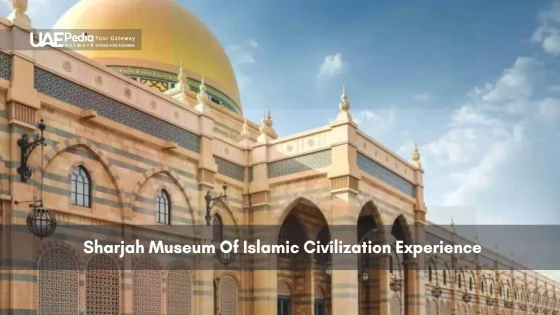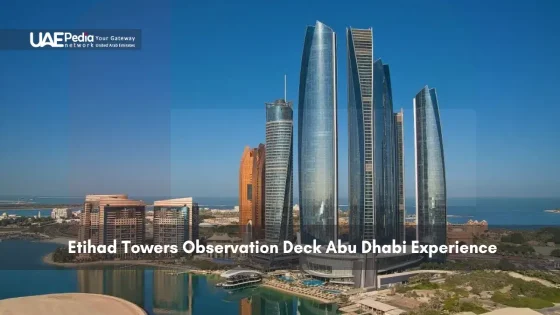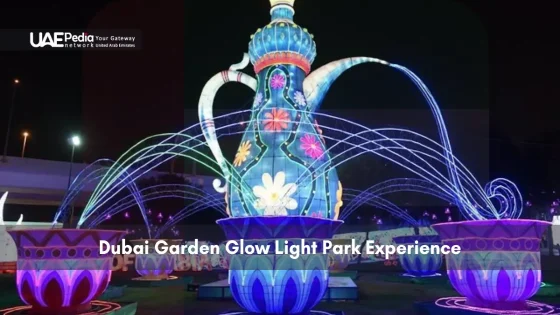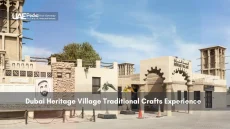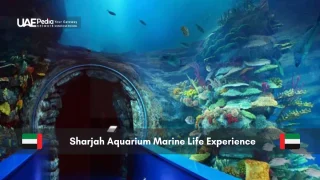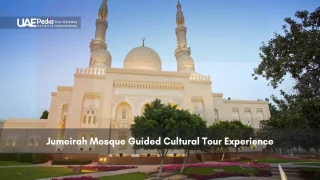Did you know one of the UAE’s most iconic cultural landmarks began as a humble souq? What started in 1996 as a heritage-focused space transformed into a modern marvel by 2008. Today, this treasure trove of Islamic art and bridges centuries, inviting visitors to explore humanity’s shared legacy.
Walking through its seven galleries feels like stepping into a time machine. From intricate pottery to scientific manuscripts, over 5,000 artifacts whisper stories of innovation across continents. The space doesn’t just display objects—it sparks conversations about how ancient wisdom shapes our modern world.
What makes this place unique? It’s not just the rare coins or dazzling textiles. It’s the way light dances across calligraphy, or how interactive displays make 7th-century astronomy feel fresh. You’ll leave understanding why this spot became the Emirates’ first institution dedicated to preserving Islamic heritage.
- Originated in 1996, reimagined in 2008 as a cutting-edge cultural destination
- Seven thematic galleries blending artifacts with interactive storytelling
- Global collection spanning science, art, and faith traditions
History, Heritage, and Architectural Transformation
Imagine a bustling marketplace transformed into a cultural time capsule. That’s the story of this iconic building, which began life in 1987 as Souq al-Majarrah—a vibrant hub for spices, textiles, and everyday trade. By 2008, it underwent a visionary makeover, emerging as a space where history breathes through every archway.
From Souq al-Majarrah to a State-of-the-Art Museum
The souq’s original structure—with its open courtyards and shaded walkways—was reimagined under Sheikh Dr. Sultan Al Qasimi’s guidance. Architects preserved traditional elements like wind towers while adding climate-controlled galleries. “We wanted the building to whisper its past while shouting its purpose,” one designer noted during the renovation.
Cultural and Design Influences in Traditional Arab-Islamic Architecture
Look up, and the golden dome steals the show—a nod to celestial symbolism in Islamic traditions. Geometric patterns dance across walls, blending ancient motifs with sleek glass panels. Even the layout follows classic principles: flowing spaces encourage contemplation, much like historic madrasas.
Today, the structure stands as a bridge. Its weathered stonework shares walls with touchscreen displays. Arches frame artifacts from 7th-century astrolabes to Ottoman textiles. This isn’t just a building—it’s a conversation between eras, proving heritage can thrive in modern skin.
Exhibitions, Galleries, and Artistic Showcases
What do 13th-century star maps and gilded Qurans have in common? They’re just two highlights among 5,000+ treasures waiting in seven themed spaces. These carefully designed areas blend rare artifacts with interactive storytelling, letting you explore humanity’s creative spirit across eras.
Permanent Galleries: Faith, Science, and Art
The Abu Bakr Gallery of Islamic Faith traces spiritual practices through stunning Qurans and pilgrimage artifacts. One gallery curator notes: “Every object here is a conversation starter about faith, scientific breakthroughs, or artistic mastery.” Nearby, the science wing displays brass astrolabes and medical manuscripts that shaped global knowledge.
Diverse Collections of Manuscripts, Coins, and Artifacts
You’ll find surprises at every turn:
- A 9th-century gold dinar thinner than a fingernail
- Persian carpets woven with botanical precision
- Ottoman-era ceramics showing Chinese trade influences
| Gallery | Focus Area | Key Objects |
|---|---|---|
| Abu Bakr Gallery | Spiritual Heritage | 9th-century Quran, Hajj artifacts |
| Ibn Al-Haytham Collection | Scientific Tools | Astrolabes, medical manuscripts |
| Artistic Traditions Wing | Creative Mastery | Ceramics, woven textiles |
Textiles glowing with natural dyes sit beside Syrian glassware that looks freshly blown. Coins reveal forgotten trade routes, while manuscripts showcase calligraphy that dances like visual poetry. It’s a living encyclopedia of creativity.
Experiencing the sharjah museum of islamic civilization
Ever wanted to touch the past? This cultural hub turns observers into participants. Twice yearly, the Al Majarrah Gallery transforms into a global stage, hosting temporary exhibitions that rotate treasures from Istanbul to Jakarta. Recent displays featured Ottoman silk robes and Moroccan geometric woodwork – each piece whispering stories across continents.
Hands-On Learning for All Ages
Saturday mornings buzz with clay-pottery workshops where kids recreate Abbasid-era designs. Adults join calligraphy sessions using traditional qalam pens. “We don’t just show art – we let you speak its language,” says a workshop leader. These tactile experiences make centuries-old techniques feel freshly invented.
Tech Meets Tradition
State-of-the-art projections bring manuscripts to life – watch astronomical diagrams animate into functioning star charts. The achievements gallery uses touchscreens to decode scientific instruments’ secrets. Need a break? Spacious prayer rooms and a palm-shaded cafeteria offer quiet reflection between discoveries.
Plan your trip during seasonal exhibitions for double the wonder. With wheelchair-friendly paths and family rest zones, every visitor finds their rhythm. As one recent guest noted: “I came for information, left with inspiration – and baklava from the café!”
Final Reflections on an Immersive Cultural Journey
What lingers after exploring five millennia of human creativity? You’ll carry whispers of silk-weavers, scholars, and artisans whose legacy lives in every gallery. From ceremonial weapons to gold-threaded textiles, these spaces don’t just display history—they let you walk through its heartbeat.
Plan smart: peek at the website before visiting. New exhibitions rotate seasonally—maybe you’ll catch a calligraphy demo or hands-on pottery workshop. Weekday mornings offer quieter moments to study astrolabes up close.
This cultural hub thrives as a bridge—connecting ancient trade routes to modern dialogues. Those intricate coins? They’re time machines revealing forgotten connections across the Islamic world. And those vivid textiles? Proof that artistry transcends centuries.
Ready to join the journey? Pack curiosity, comfy shoes, and an appetite for baklava. Every visit uncovers fresh layers in this living archive. Because here, the past isn’t sealed behind glass—it’s a conversation starter, inviting you to add your voice.
Originally a bustling souq, the structure blends traditional Arab-Islamic elements like geometric patterns and domes with modern museum tech. Its transformation honors Sharjah’s heritage while creating spaces that let artifacts shine—think golden calligraphy under soft lighting!
Absolutely! The museum hosts workshops on Arabic calligraphy, ceramic painting, and textile weaving. Kids love the science displays explaining ancient astronomy tools, and rotating exhibitions keep every visit fresh—check their website for upcoming events.
Over 5,000 pieces span 1,400 years of history. You’ll find rare Qurans, astrolabes, intricate metalwork, and even 7th-century coins. The Abu Bakr Gallery of Islamic Faith alone has 100+ manuscripts—each telling stories of spiritual and scientific breakthroughs.
Yes, but skip the flash to protect delicate textiles and pigments. The central dome’s starry mosaic is a fan favorite for selfies, and the courtyard’s arches make perfect framing for that “cultural explorer” Instagram vibe.
Start on the first floor with the Abu Bakr Gallery to understand Islam’s core principles. Then head upstairs for art and innovation exhibits—don’t miss the medical tools display! Audio guides (AED 15) offer deep dives, or join free weekend tours at 11 AM.
The museum’s café serves Arabic coffee and dates for a quick break. For full meals, stroll 5 minutes to Heart of Sharjah’s restored eateries. Al Arsah Souq’s falafel stalls are a local secret—grab a wrap before browsing antique shops!
